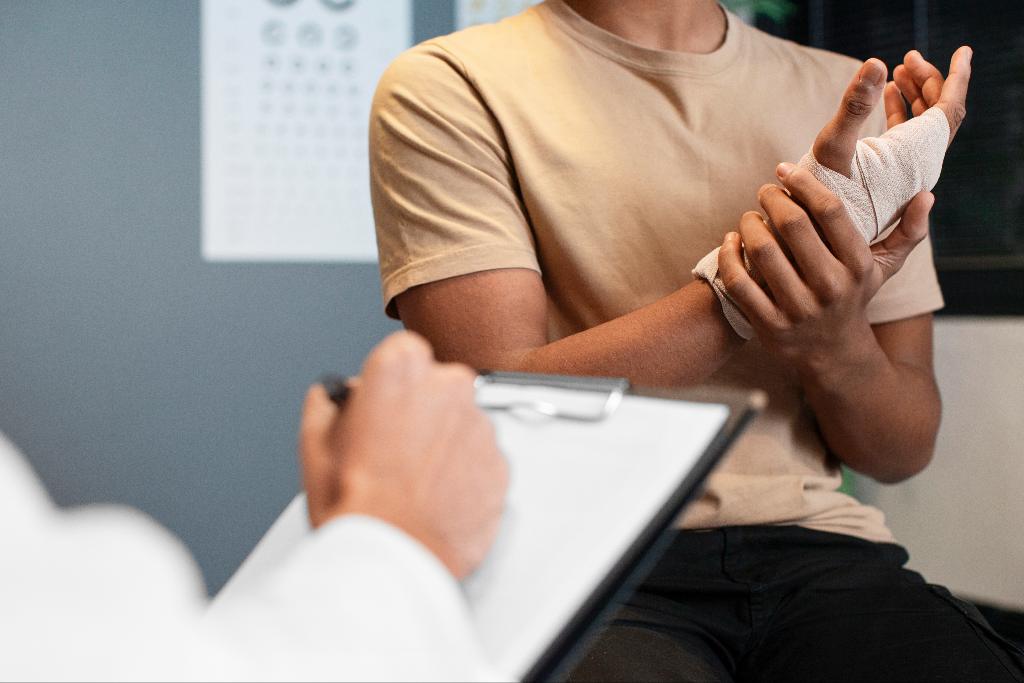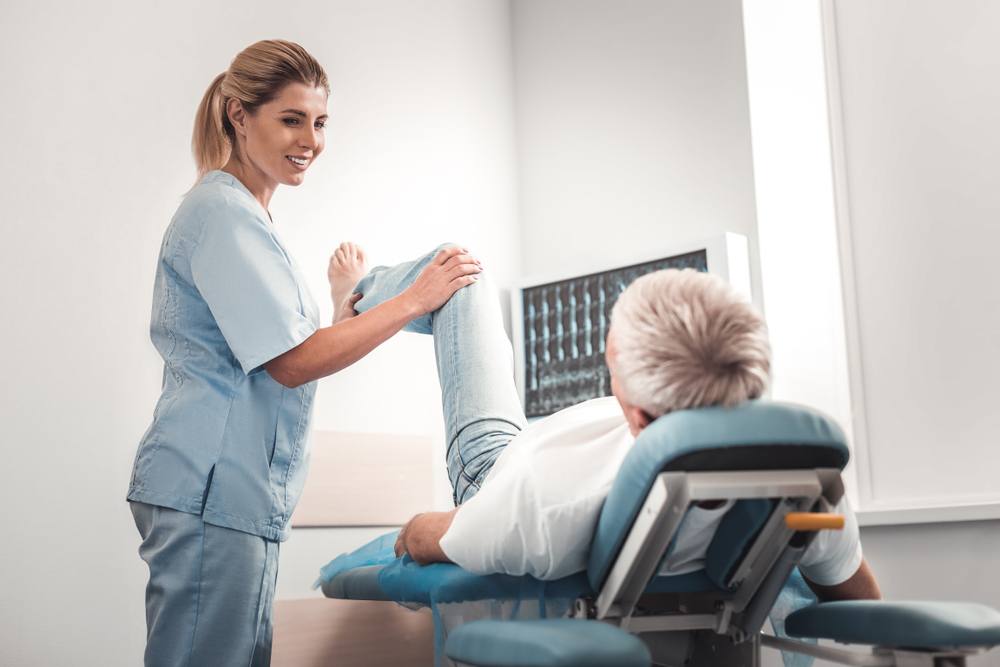 Breaking a bone is never on anyone’s to-do list, but fractures are surprisingly common. Whether it’s from a slip and fall, a sports injury, or even a car accident, millions of people experience broken bones each year.
Breaking a bone is never on anyone’s to-do list, but fractures are surprisingly common. Whether it’s from a slip and fall, a sports injury, or even a car accident, millions of people experience broken bones each year.
While it can feel overwhelming in the moment, the body has an incredible ability to repair itself. Bone is living tissue, and when it breaks, it doesn’t just “patch” itself like a scrape or bruise. Instead, your body follows a fascinating and structured process called fracture healing, made up of a sequence of stages that gradually restore the bone’s strength and function.
If you’ve recently been injured or are helping a loved one through recovery, understanding how bones heal can give you peace of mind and help you know what to expect. Let’s walk through the 5 stages of fracture healing and what each stage means for recovery.
Stage 1: The Initial Injury Phase
The very first stage begins the moment the bone breaks. Right away, blood vessels in the bone and surrounding tissues get damaged, which leads to bleeding at the fracture site. This pooling blood quickly forms what’s called a hematoma, a blood clot that surrounds the broken bone ends.
Think of the hematoma as your body’s emergency response team rushing to the scene. It brings important nutrients, oxygen, and immune cells to the injured area. While this may sound alarming, the hematoma is actually a key component of healing because it creates a foundation for the repair process.
During this stage, you’ll notice classic signs of injury: swelling, bruising, tenderness, and sometimes even visible deformity. The initial injury stage typically lasts a few days, though you may continue to experience uncomfortable symptoms longer depending on the type and severity of the fracture.
What this means for you:
- Immobilization is key: this is why doctors often use casts, splints, or even surgical fixation with plates and screws.
- Pain and swelling may be most intense during this time, but rest, ice, and elevation can help.
- While it may feel like “nothing is happening,” your body is already hard at work behind the scenes.
Stage 2: The Early Repair Phase
Within a few days to a week after the injury, your body enters the second stage. Your body begins to build a kind of soft tissue “bridge” between the broken bone ends called the soft callus. It functions a bit like scaffolding: it’s not very strong yet, but it will help hold things together while the real repair gets underway.
During this second stage, pain usually starts to lessen, though the bone is still fragile. You may feel like you’re getting better, but the bone isn’t ready to handle normal stress just yet.
What you may notice:
- Pain often starts to decrease during this stage.
- The bone isn’t healed yet, so weight-bearing is still limited.
- X-rays may not show much progress, which can feel discouraging, but the soft callus is forming beneath the surface.
This stage usually lasts about 2–3 weeks. It’s one of the most delicate times in recovery because the bone is still unstable. That’s why it’s so important to follow your doctor’s instructions to avoid disrupting the healing callus.
Stage 3: The Stability Phase
Around 2–6 weeks after the injury, the soft callus starts to transform into a hard callus made of stronger bone. This happens as bone-producing cells known as osteoblasts replace the cartilage with actual bone tissue. Think of it like swapping out a temporary wooden bridge for a sturdier concrete one. The fracture line may still be visible on X-rays, but the bone becomes more stable and can start to handle light stress.
What this means for your recovery:
- The hard callus provides greater stability.
- Your doctor may gradually allow more movement or partial weight-bearing during this stage.
- Physical therapy may begin, focusing on gentle range-of-motion exercises to prevent stiffness in nearby joints.
You may start to feel more confident during this stage, but it’s still important not to rush the healing process.
Stage 4: The Reshaping Phase
Once the hard callus is in place, the body shifts to making the bone stronger. During the reshaping phase, the bone is remodeled into a more solid, permanent structure. The remodeling process smooths rough edges, restores the bone, and aligns it with the natural stresses placed on that area of the body. For example, a weight-bearing bone like the femur is strengthened to handle walking, running, and jumping again.
This stage can last several months or even years, depending on the size of the fracture and your overall health. The amazing part is that eventually, the remodeled bone may become just as strong or even stronger than it was before the injury.
During this stage:
- Physical therapy often ramps up to include strengthening, balance, and more dynamic exercises.
- Most people return to their normal daily activities, while athletes may need additional time and training to get back to peak performance.
Stage 5: The All-Clear Phase
This stage is the “all clear” signal from your doctor that the bone has healed properly. It’s the moment many patients look forward to: the day when casts or braces are removed, restrictions are lifted, and life can fully return to normal. That means that you no longer feel pain or tenderness at the fracture site, and an X-ray confirms that the bone has fused solidly. The 5 stages of fracture healing timeline can vary from person to person, so it’s important to get started with your orthopedic doctor as soon as possible.
Factors That Influence Fracture Healing
While the five stages of bone fracture healing follow the same biological pattern, the timeline and success of healing can vary from person to person. Factors that can influence recovery include:
- Age: Children often heal much faster than adults
- Overall health: Conditions like diabetes, osteoporosis, or immune disorders can slow healing
- Nutrition: Adequate calcium, vitamin D, and protein support bone repair
- Lifestyle: Smoking and heavy alcohol use can significantly delay healing
- Type of fracture: Simple, non-displaced fractures tend to heal more quickly than complex or comminuted fractures
Supporting Your Body Through Recovery
If you or someone you love is recovering from a fracture, you may feel a mix of impatience and worry. Healing takes time, but there are things you can do to support your body:
- Follow medical advice carefully. If your provider recommends avoiding weight-bearing or keeping a cast on, it’s for good reason.
- Prioritize nutrition. Foods rich in calcium, vitamin D, magnesium, and protein are especially beneficial.
- Stay active within limits. Gentle movement helps circulation and prevents stiffness in surrounding muscles and joints.
- Avoid smoking and alcohol. Both interfere with bone healing.
- Stay patient. Bone healing is a marathon, not a sprint.
When to Seek Help for a Broken Bone
Sometimes, fracture healing doesn’t go as smoothly as expected. Delayed healing or improper alignment can lead to long-term issues like chronic pain, limited mobility, or arthritis. If you notice persistent pain, swelling, or difficulty moving the area after the expected healing time, it’s important to follow up with your orthopedic specialist.
What to Expect with Fracture Treatment
 At AICA Orthopedics, we understand that healing from a fracture isn’t just about waiting for the bone to mend; it’s about making sure the bone heals correctly and that you get back to moving with confidence. That’s why our team of multi-specialty healthcare professionals brings together everything you need under one roof.
At AICA Orthopedics, we understand that healing from a fracture isn’t just about waiting for the bone to mend; it’s about making sure the bone heals correctly and that you get back to moving with confidence. That’s why our team of multi-specialty healthcare professionals brings together everything you need under one roof.
Here’s what you can expect during your treatment with us at AICA Orthopedics in College Park.
- Diagnostic Imaging: Accurate diagnosis is the first step. We use advanced imaging like X-rays, CT scans, or MRIs to fully understand the extent of your fracture. Having these services on-site means less waiting and more precise treatment planning.
- Orthopedic Specialist Care: Our orthopedic doctors evaluate your fracture and create a personalized treatment plan. Depending on the type of break, this may include immobilization with a cast or brace, or surgical options like pins, plates, or screws to stabilize the bone.
- Pain Management: Healing takes time, but you don’t need to suffer through it. Our team helps manage pain with safe, effective strategies so you can focus on recovery.
- Physical Therapy and Rehabilitation: Once your bone is stable enough, our physical therapists guide you through exercises that restore strength, mobility, and flexibility. This step is key to regaining full function and helps prevent stiffness in nearby joints or muscles.
- Comprehensive Care: The best part about AICA is that all of these services, including imaging, orthopedic care, pain management, and physical therapy, are in one place. You don’t have to drive around town or manage multiple appointments with different providers. Our team works together to support you through every phase of healing.
Get Expert Orthopedic Care at AICA Orthopedics
If you’ve suffered a fracture or are struggling with the recovery process, you don’t have to go through it alone. At AICA Orthopedics, our team of orthopedic doctors, physical therapists, and more work together under one roof to ensure you get the best care possible.
From diagnosis to treatment and rehab, we’re here every step of the way to help you heal properly and prevent long-term complications. Schedule your consultation with AICA Orthopedics today and take the first step toward a full recovery.